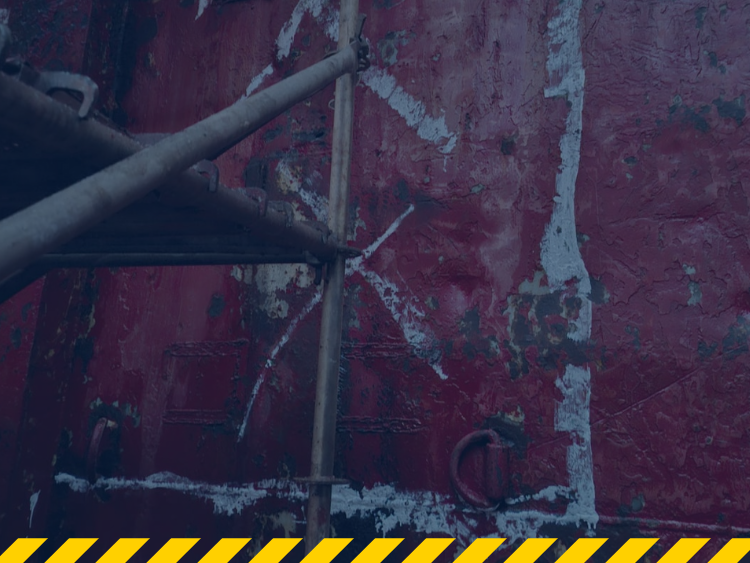Maintaining the structural integrity of vessels is critical for ensuring operational efficiency, safety, and compliance with international maritime regulations. In December 2024, a client contacted Weser Maritim. They needed a complete steel renewal project for a cargo ship in Istanbul.
This operation involved cropping and renewing floor plates in a cargo hold. It required careful planning and execution.

Scope of Work
The project involved the following key tasks:
- Steel Plate Cropping: Removal of damaged floor plates, measuring a total of 22,600 mm x 2,000 mm with a thickness of 18 mm.
- Steel Plate Positioning: Placement of new carbon steel plates using the ship’s crane for precision alignment.
- CO2 Welding: Welding three sections of high-strength steel plates, each measuring 8,000 mm x 2,000 mm with a thickness of 18 mm.
Challenges and Solutions
Strict Maintenance Schedules
The vessel’s operational downtime needed to be minimized to avoid disruptions to its maintenance schedule and voyage plans. Weser Maritim implemented predictive maintenance strategies, ensuring the project was completed within the client’s timeline.
Compliance with Classification Societies
The project required certified welders and fitters approved by Class NK, with acceptance from Class DNV and Class LR. Weser Maritim’s team adhered to stringent welding procedures and quality standards to meet the requirements of these societies.
Precision and Safety
Handling high-strength steel plates in a confined cargo hold demanded careful planning. Weser Maritim deployed advanced safety equipment and ensured all maintenance tasks were executed with precision to prevent water damage or structural instability.
Execution
Preparation
Weser Maritim’s ship repair team collaborated closely with the client to:
- Assess the condition of the damaged floor plates using condition-based maintenance techniques.
- Develop a detailed welding procedure plan for carbon steel plates to ensure durability and compliance.
Steel Cropping and Renewal
The damaged plates were cropped using precision tools to avoid compromising adjacent structures. The replacement plates, pre-measured to exact specifications, were positioned using the ship’s crane to ensure alignment with the marine structure’s framework.
CO2 Welding
Certified welders employed advanced CO2 welding techniques to join the new steel plates securely. This method ensured high-strength joints capable of withstanding the pressure vessel environment of a cargo hold.
Results
Enhanced Vessel Maintenance: The steel renewal project restored the structural integrity of the cargo hold, ensuring the vessel’s operational efficiency and safety.
Regulatory Compliance: The completed work met the standards set by Class NK, Class DNV, and Class LR, satisfying all inspection criteria.
Minimized Downtime: The project was completed within the specified timeline, allowing the vessel to resume operations as scheduled.
Sustainable Practices: By utilizing high-quality materials and adhering to strict repair and maintenance protocols, Weser Maritim reduced the likelihood of future damage and costly repairs.

